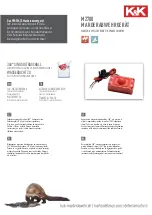
Typical Wiring Diagram
LEGEND
Field Splice
Terminal (marked)
Terminal (unmarked)
Splice
Splice (marked)
Factory Wiring
Field Control Wiring
Field Power Wiring
Accessory or Optional Wiring
To Indicate Common Potential
Only: Not to Represent Wiring
BR
Blower Relay
C
Contactor
CAP
Capacitor
COMP
Compressor Motor
CR
Combustion Relay
EQUIP
Equipment
FS
Flame Sensor
FU
Fuse
GND
Ground
GVR
Gas Valve Relay
HPS
High Pressure Switch
HS
Hall Effect Sensor
HV TRAN High Voltage Transformer
I
Ignitor
ICM
Integrated Control Motor
IDM
Induced Draft Motor
IFM
Indoor Fan Motor
IGC
Integrated Gas Unit
Controller
IMR
Indoor Motor Relay
LPS
Low Pressure Switch
LS
Limit Switch
MGV
Main Gas Valve
OFM
Outdoor Fan Motor
QT
Quadruple Terminal
RS
Rollover Switch
TRAN
Transformer
Testing the Inducer Motor
Testing the Inducer Motor Hall Effect switch using a Voltmeter capable of reading DC Voltage
• With the three wire plug connected and power applied , use a Voltmeter set to DCV and connect the
negative (-) meter lead to pin 3
and the
positive lead (+) to pin 1
.Carefully
rotate the inducer draft motor by hand 180 degrees and the reading should be
less than 1 Volt DC
. Continue to rotate the motor through 180 degrees towards 360 degrees. The
voltage should increase to a reading between
6.5 VDC and 9VDC
at the full 360 degree mark. If the first reading is less than 1VDC or the second reading is not between 6.5 & 9
VDC, you should replace the sensor.
• Next, move the
positive lead of the meter to pin 2
leaving the
negative lead on pin 3
. Take a reading with your DCV meter and the reading should measure between
16.5VDC
and 21VDC
. Replace the sensor if the reading is not in range.
• If Code 6 flashes on the board, check for continuity across the jumper at J2. The jumper should not be cut and should have full continuity.
1
2
3




















